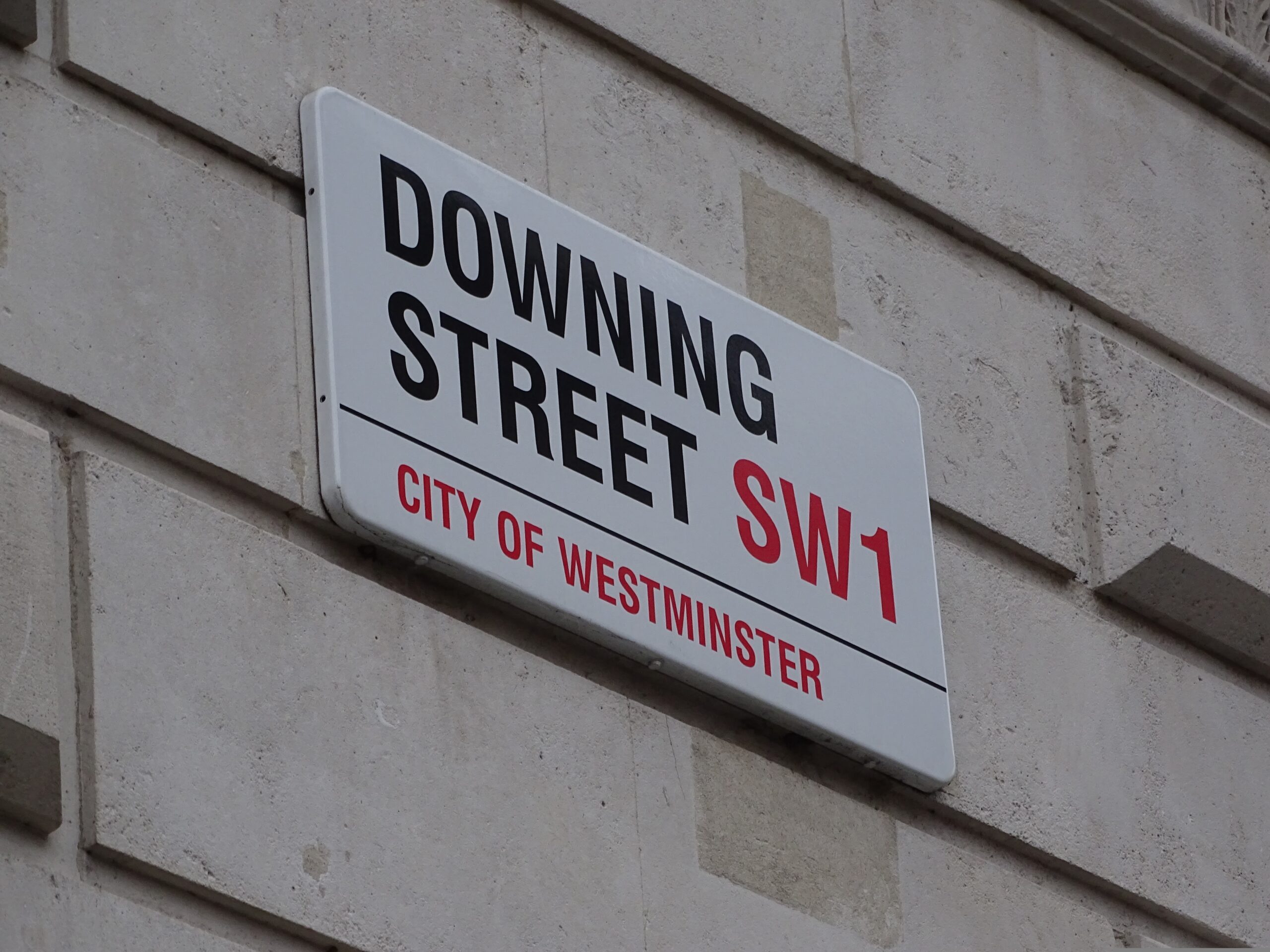Newly updated policy implements a 15-month pipeline model which could make it easier for departments to self-approve ‘business-as-usual’ spending, but GDS pledges the new policy will bring the ‘same rigour’
The Cabinet Office has overhauled the digital and technology spend controls process and implemented a lighter-touch “pipeline” model offering the potential for departments to more easily dedicate government money to “business as usual” spending.
The idea of relaxing the controls was mooted 18 months ago by then-new director general of the Government Digital Service Kevin Cunnington.
As of March 2017, Cunnington indicated that GDS was trialling the use of a model whereby Whitehall departments and other government agencies maintained a 15-month pipeline of planned digital and technology spending for ongoing monitoring and, if necessary, intervention.
This model has now been fully implemented, with an updated policy document published by the Cabinet Office. In the new system, central government organisations can, largely, self-approve projects they believe fall under the category of “business as usual spend”.
Under the new policy:
- Departments are advised to maintain a 15-month pipeline of all planned spending on digital projects likely to exceed £100,000, and all technology spending likely to exceed £5m. The Cabinet Office has scrapped the previous requirement that also required approval for £1m-plus projects that used technology delivered from “independent shared services centres”.
- Any projects that could be considered “novel or contentious” should also be entered into the pipeline, regardless of their value. This could include automatic contract extensions, any contracts worth in excess of £100m, and hosting contracts of more than two years in length. Although the previous policy’s stance that these were all “red lines” appears to have been softened somewhat. But there is still an effective embargo on tower-based delivery models, where companies contracted to provide services also deliver system integration to the same part of government.
- Once organisations have completed the “triage” phase of the process, wherein project spending has been self-assessed and entered into the pipeline, they can enter the approval process, during which spending will be assessed as falling into one of four categories: assured; monitor; control; or pending.
- Spending can be marked as ‘assured’ by an organisation’s internal assurance board. Such a board can self-approve planned spending by measuring it against publicly available GDS assessment criteria. Departments are advised that they can “start spending money” on any projects deemed to be assured.
- These criteria are designed to assess projects in seven areas: compliance with minimum pipeline standards; whether the project is built on user needs and research; use of engagement, governance, and scrutiny; adherence to the government’s Technology Code of Practice; use of established resources and capabilities; relevance and collaborativeness of the project; identification and monitoring of the project’s benefits
- If a department measures its planned spending against GDS assessment criteria and finds that “the spend activity does not currently meet all required standards but is not contentious”, the project should be marked as ‘monitor’. In this case, the department or agency in question should “put a plan in place to make sure activities meet standards within an agreed timeframe”. This plan will be subject to approval by representatives from GDS or the Government Commercial Function (GCF).
- Departments can begin spending money on sub-£10m projects assessed as being ‘monitor’ once they have gained approval from an independent “joint assurance board” featuring teams from the Cabinet Office.
- If a department or agency believes that its planned “spend activity is novel or contentious or is unlikely to meet all the required standards”, it should mark this project as ‘control’.
- Control spending will be subject to recommendations – and, in most cases, required conditions – from the “GDS senior technology adviser” attached to the department in question. The project will ultimately be submitted for approval directly to the Cabinet Office minister. This submission will be jointly made by GDS and GCF if the planned spending exceeds £10m. Submissions for projects worth less than this will be made by GDS alone.
- If a project is subject to both technology spend controls and the separate controls applied to commercial projects, then it must attain approval from both GDS and GCF.
- Departments can only spend on control projects once the Cabinet Office minister – currently David Lidington – has signed off on the plan. In some cases, the approval will be subject to certain conditions imposed by the minister.
- If the minister rejects the submission, departments have the opportunity to submit an amended case. Although the guidance states that “your GDS senior technology adviser will usually flag any issues before a case is submitted to the minister, so your organisation should be able to address them ahead of approval”.
- If a department’s planned digital and technology spending activity has not “been fully defined”, or is yet to secure funding, it should be marked as pending until assessment is possible.
Under the old policy, departments were required to apply for approval for individual projects at some point before they entered the discovery phase. This process involved completing and submitting to GDS a spend-control form, alongside a business case. GDS would then assess each submission and approve, conditionally approve, or deny the request.
The pipeline model may create more work for departments – particularly in the short-term. But it should, ultimately, allow them to more easily spend money on business-as-usual projects.
The government guidance stated: “It may take time for you to create a pipeline, and you need to maintain it on an ongoing basis to comply with the spend controls. A GDS senior technology adviser will work with your organisation to develop a pipeline.”
It added: “Where your organisation can identify less complex areas of repeat, commoditised, or routine digital and technology spend in the pipeline, you should show this. You may work with the Cabinet Office to categorise these areas of spend as ‘assured’, if this approach meets the GDS spend controls pipeline assessment criteria.”
It is understood that the new policy aims to allow departments to roll out the Government Transformation Strategy, while still striving to promote technology reuse and minimise unnecessary spending.
In response to PublicTechnology request for comment, a government spokesperson said: “The new digital and technology spend controls will strengthen GDS collaboration with departments. The same rigour will still be evident in the new pipeline approach to planned digital and technology spend, which encourages GDS and departments to engage earlier. This means GDS will have more time to support departments to design the best approach. The forward-look will make it easier for central government to identify potentially contentious spend.”
A spend-control pipeline is also required for all commercial spending on contracts, frameworks, or dynamic purchasing systems worth in excess of £10m, or changes to existing deals that result in their expected value changing by at least £10m. Controls also apply to spending on advertising, marketing, and communications of more than £100,000, consultancy projects worth upwards of £1m, and property rental contracts of more than £100,000. Learning and development services worth in excess of £10,000 or “outside the core curriculum” of a department must also attain approval.
The controls policy also requires all redundancy and compensation schemes to be approved by the Cabinet Office. Government agencies must also “submit quarterly recruitment forecasts and accompanying narrative” to the Cabinet Office.




This is one awesome article post.Really thank you! Cool.
Mexican Easy Pharm: Mexican Easy Pharm – п»їbest mexican online pharmacies
buying from online mexican pharmacy https://mexicaneasypharm.com/# mexican border pharmacies shipping to usa
reputable mexican pharmacies online
mexico pharmacies prescription drugs https://mexicaneasypharm.com/# mexico pharmacies prescription drugs
medicine in mexico pharmacies
mexican rx online https://mexicaneasypharm.shop/# Mexican Easy Pharm
medication from mexico pharmacy
https://semapharm24.com/# semaglutide best price
prednisone 10 mg canada
http://cytpharm.com/# buy cytotec online
prednisone for sale no prescription
https://cytpharm.shop/# purchase cytotec
buy prednisone no prescription
http://dappharm.com/# buy priligy
average cost of prednisone 20 mg
http://semapharm24.com/# rybelsus semaglutide tablets
prednisone 3 tablets daily
http://semapharm24.com/# Sema Pharm 24
50 mg prednisone tablet
https://kamapharm.shop/# Kama Pharm
buying prednisone without prescription
http://dappharm.com/# priligy
prednisone 20mg nz
http://kamapharm.com/# Kama Pharm
prednisone brand name canada
https://kamapharm.com/# Kamagra tablets
prednisone 2 5 mg
https://dappharm.shop/# Priligy tablets
prednisone 5mg cost
https://semapharm24.com/# SemaPharm24
where can i buy prednisone
https://predpharm.shop/# PredPharm
prednisone 10mg buy online
https://cytpharm.com/# buy misoprostol over the counter
can you buy prednisone in canada
https://farmaprodotti.shop/# migliori farmacie online 2024
acquisto farmaci con ricetta
https://farmatadalitaly.com/# farmacia online senza ricetta
farmacie online affidabili
https://farmasilditaly.shop/# viagra cosa serve
farmacie online sicure
https://farmabrufen.shop/# Ibuprofene 600 prezzo senza ricetta
farmacie online sicure
La competencia entre casinos beneficia a los jugadores.: jugabet chile – jugabet casino
winchile casino winchile.pro Las aplicaciones mГіviles permiten jugar en cualquier lugar.
The Philippines has several world-class integrated resorts. https://jugabet.xyz/# Las redes sociales promocionan eventos de casinos.
Most casinos offer convenient transportation options. https://taya777.icu/# Live dealer games enhance the casino experience.
taya777 app taya777.icu Players often share tips and strategies.
Loyalty programs reward regular customers generously. https://phmacao.life/# Slot machines feature various exciting themes.
taya777 app taya777 app The thrill of winning keeps players engaged.
Poker rooms host exciting tournaments regularly.: phtaya casino – phtaya
phtaya casino phtaya casino Online gaming is also growing in popularity.
Slot tournaments create friendly competitions among players. http://taya777.icu/# Players enjoy both fun and excitement in casinos.
Entertainment shows are common in casinos.: phmacao casino – phmacao com
phmacao club phmacao club Most casinos offer convenient transportation options.
Slot tournaments create friendly competitions among players.: phmacao – phmacao com login
The poker community is very active here.: taya777.icu – taya777 register login
taya365 login taya365.art Promotions are advertised through social media channels.
The casino experience is memorable and unique. http://phmacao.life/# The Philippines offers a rich gaming culture.
Security measures ensure a safe environment.: taya365 com login – taya365 login
Slot machines feature various exciting themes.: taya365 com login – taya365
phmacao com login phmacao casino The poker community is very active here.
Many casinos host charity events and fundraisers.: taya365 com login – taya365
taya777 register login taya777.icu Most casinos offer convenient transportation options.
Slot machines attract players with big jackpots.: phmacao com login – phmacao
Los juegos de mesa son clГЎsicos eternos.: jugabet.xyz – jugabet
phtaya casino phtaya.tech Promotions are advertised through social media channels.
Casinos often host special holiday promotions. http://taya777.icu/# Resorts provide both gaming and relaxation options.
The Philippines has a vibrant nightlife scene.: phmacao club – phmacao
La pasiГіn por el juego une a personas.: winchile casino – winchile.pro
phmacao club phmacao The Philippines offers a rich gaming culture.
п»їCasinos in the Philippines are highly popular. http://phtaya.tech/# The casino industry supports local economies significantly.
La mayorГa acepta monedas locales y extranjeras.: jugabet casino – jugabet.xyz
Los juegos en vivo ofrecen emociГіn adicional.: winchile.pro – winchile.pro
winchile casino win chile Las promociones atraen nuevos jugadores diariamente.
The thrill of winning keeps players engaged.: taya777 login – taya777 register login
Online pharmacy USA: family pharmacy – family pharmacy
cheapest pharmacy for prescription drugs https://easycanadianpharm.com/# canadian pharmacy no scripts
easy canadian pharm easy canadian pharm easy canadian pharm
best canadian pharmacy no prescription http://megaindiapharm.com/# Mega India Pharm
canadian pharmacy world coupon: Online pharmacy USA – family pharmacy
xxl mexican pharm medication from mexico pharmacy xxl mexican pharm
no prescription needed pharmacy http://easycanadianpharm.com/# easy canadian pharm
MegaIndiaPharm Mega India Pharm Mega India Pharm
pharmacy coupons https://easycanadianpharm.shop/# canadian pharmacies
prescription drugs online https://easycanadianpharm.com/# easy canadian pharm
mexican rx online xxl mexican pharm best online pharmacies in mexico
drugstore com online pharmacy prescription drugs http://easycanadianpharm.com/# easy canadian pharm